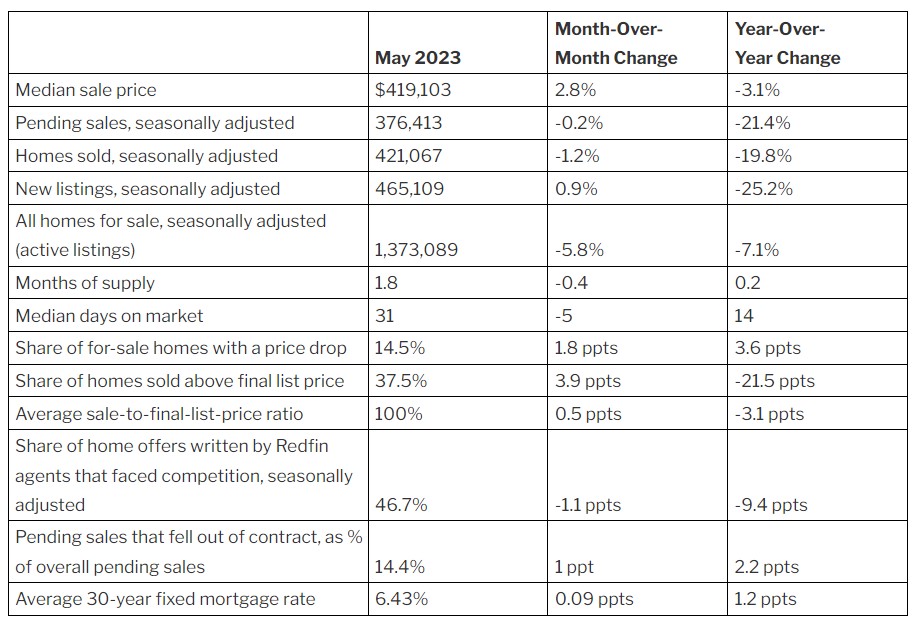 It looks like the typically hot summer buying and selling season may be in trouble according to a new Redfin report which found the number of homes for sale in May 2023 fell 7.1% to 1.4 million units on a seasonally adjusted basis, which equates to the lowest level in Redfin’s history and the first annual decline since April 2022.
It looks like the typically hot summer buying and selling season may be in trouble according to a new Redfin report which found the number of homes for sale in May 2023 fell 7.1% to 1.4 million units on a seasonally adjusted basis, which equates to the lowest level in Redfin’s history and the first annual decline since April 2022.
In comparison to pre-pandemic numbers, there were 2.2 million homes for sale over the same period in May 2019, meaning that housing supply is 38.6% below where it previously was.
Housing stock has evaporated due to the lack of people selling their homes due to the lock-in effect. New listings of homes for sale declined 25.2% year over year in May to the third lowest level on record on a seasonally adjusted basis, as homeowners were handcuffed by high mortgage rates.
Due to ultra-low interest rates the market saw during the pandemic, nearly every homeowner with a mortgage refinanced to get an interest rate below 6%. The average 30-year-fixed mortgage rate in May was 6.43%, up from 5.23% a year earlier and a record low of 2.65% in 2021.
Due to the low inventory levels, The median U.S. home sale price was $419,103 in May. That’s down just 3.1% from a year earlier, when prices hit a record high of $432,311. While home prices fell in May, they posted a smaller decline than they did in April, when prices dropped 4.2% from a year earlier—the largest decrease on record with the exception of January 2012.

“It’s too early to say that price declines have bottomed out,” said Redfin Chief Economist Daryl Fairweather. “Prices may have room to fall because mortgage rates could still rise. The Federal Reserve just signaled that it is likely to continue raising interest rates this year. That could further hamper homebuyer demand and cause home prices to fall in the near term, though the drops would be minimal. We’re unlikely to see double-digit price declines like we did during the 2008 housing crisis.”
Fairweather continued: “Many people think it’s a bad time to buy a home because mortgage rates are high, but they should keep in mind that when rates do ultimately fall, many buyers waiting on the sidelines could jump back in. That could lead to more bidding wars since there aren’t enough homes for sale, and heightened competition could push up prices, offsetting some—or all—of the benefit of lower interest rates.”
According to Redfin, the average sale-to-list price ratio, which measures how close homes are selling to their final asking prices, was 100% in May, meaning the typical home that sold was purchased at its list price. That’s down from 103.1% a year earlier, but is the highest level of any May on record prior to the pandemic and follows nine straight months of sub-100% sale-to-list price ratios.
Closed home sales are falling, but not as quickly as they were at the start of the year—sales fell by 19.8% year-over-year in May, the smallest drop in nearly a year and an improvement from the 35.3% decline in January. Pending home sales performed similarly. They fell 21.4% year over year on a seasonally adjusted basis in May, the smallest drop since last summer and an improvement from the record 36.1% decline in November. Pending sales were down 16.1% from May 2019 levels.
Click here to view Redfin’s report in its entirety, including breakdowns for notable metropolitan areas.






